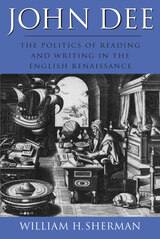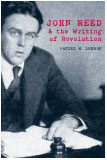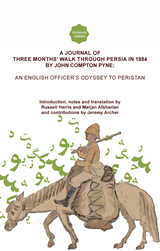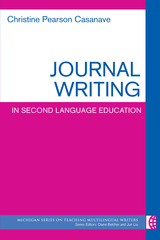6 start with J start with J



John Reed (1887-1920) is best known as the author of Ten Days That Shook the World and as champion of the communist movement in the United States. Still, Reed remains a writer almost systematically ignored by the literary critical establishment, even if alternately vilified and lionized by historians and by films like Warren Beatty’s Reds.
John Reed and the Writing of Revolution examines Reed’s writing from a different critical perspective—one informed by a theoretical and practical understanding of literary nonfiction. In both politics and writing, John Reed defied fashion. In his short career, Reed transcended the traditional creative arts of fiction, poetry, and drama in favor of deeply researched histories composed with the cadence of fiction and the power of fact. Reed thereby alienated literary critics who had idealized timeless artistry against the rough-and-tumble world of historical details and political implications.
Working from a close investigation of rare articles, manuscripts, and the Reed papers at Harvard as well as from Reed’s published work, Daniel W. Lehman offers the first detailed literary study of the man who followed Pancho Villa into battle; wrote literary profiles of such characters as Henry Ford, William Jennings Bryan, and Billy Sunday; explicated the Byzantine factionalism of Eastern Europe; and witnessed the storming of the Winter Palace and the birth of Soviet Russia.


Journal writing is not new--journals have been around for centuries. More recently, journals have been viewed as a means of scaffolding reflective teaching and encouraging reflectivity in research processes. As a result, some educators may ask, “What more do we need to know?” Those likely to raise this question are probably not thinking of the explosive growth of reflective writing enabled by social networking on the Web, the blogs and other interactive e-vehicles for reflection on experiences in our literate, “real,” and virtual lives This revisiting of journal writing from a 21st century perspective, informed by relevant earlier literature, is what Christine Pearson Casanave guides readers through in this first book-length treatment of the use of journal writing in the contexts of language learning, pre and in-service teaching, and research.
Casanave has put together existing ideas that haven't been put together before and has done it not as an edited collection, but as a single-authored book. She has done it in a way that will be especially accessible to teachers in language teacher education programs and to practicing teachers and researchers of writing in both second and foreign language settings, and in a way that will inspire all of us to think about, not just do, journal writing.
Those who have never attempted to use journals in their classes and own lives, as well as others who have used it with mixed results, will probably be tempted to try it in at least some of the venues Casanave provides guidance for. Those already committed to journal writing will very likely find in this book new reasons for expanding and enhancing their use of journals.

Designed to be used simultaneously with Jusuur 1: Beginning Communicative Arabic, the Jusuur 1 Arabic Alphabet Workbook teaches students the letters, short vowels, and diacritics found in Arabic. As students learn new letters in the alphabet workbook, they strengthen their literacy skills through the reading and writing exercises in Jusuur 1.
A distinguishing feature of the Jusuur 1 Arabic Alphabet Workbook is that it introduces letters approximately in the order of letter frequency rather than in the traditional alphabetical order. This method, tested extensively in the classroom, enables students to begin to read and write meaningful phrases they are learning in Jusuur 1: Beginning Communicative Arabic as early as possible. Each letter section includes an introduction to the letter and its shapes and sound; space for writing practice; and activities to practice reading and dictation.
Features of the alphabet workbook include:-Authentic examples of language drawn from poetry, billboards, signs, and other sources to help students learn to identify letters -Samples of real Arabic handwriting, and guidance on recognizing and writing letters that look different when printed versus handwritten
Resources available on JusuurTextbook.com:-Audio files for dictation and listening exercises-Extensive instructor’s resources, including pedagogical notes, answers to activities, and recommendations for lesson and unit planning
By the end of the Jusuur 1 Arabic Alphabet Workbook, students will have learned all of the letters and sounds of the Arabic alphabet. Used in conjunction with Jusuur 1: Beginning Communicative Arabic, this workbook will give students a firm foundation in Arabic literacy to continue their studies.
READERS
Browse our collection.
PUBLISHERS
See BiblioVault's publisher services.
STUDENT SERVICES
Files for college accessibility offices.
UChicago Accessibility Resources
home | accessibility | search | about | contact us
BiblioVault ® 2001 - 2024
The University of Chicago Press









